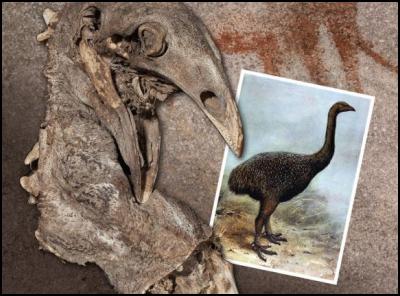Which species to resurrect?
Which species to ressurect?
De-extinction is no longer a matter of if, but when, according to University of Otago’s Professor Phil Seddon, but we should think about what species we should resurrect and what would happen to our ecosystems if we did.

Prof Seddon guest-edited a special issue of Functional Ecology, published this week, with contributions from other New Zealand scientists. Contributors Dr Tammy Steeves, from the University of Canterbury, and Landcare Research's Dr Jamie Wood also wrote about their research on Sciblogs.co.nz.
While the science of de-extinction is moving steadily from Sci-Fi reality, there are still many ecological considerations. If an extinct species could be successfully resurrected, should it only be a curiosity to marvel at in a zoo? Or would we pursue the technology with the hope of returning species to wild habitats?
If so, what if their ecological niche is gone, or all their habitat has been destroyed? Or if there isn't enough genetic diversity left in the new population, could the first species to be resurrected also be the first to be doomed to 're-extinction'. These are the topics tackled in this week's special journal issue.
Despite popular opinion, this probably rules out mammoths and moa for resurrection, Prof Seddon wrote on Sciblogs, as the best candidates for de-extinction might be those whose demise was more recent.
“Where we might have more confidence that we understand and can manage the original threats, that habitat still exists, that we know enough about critical features of physiology, biology and behaviour, and we might be more likely to have the appropriate genetic samples, suitable surrogates and applicable husbandry manuals."
The huia might be a safer bet, as there's ample habitat and a number of museum samples to obtain genetic material from. But as University of Canterbury conservation geneticist Dr Tammy Steeves told The Press, "we don't actually know how much genetic diversity will be in those samples," and if there isn't much, the huia might then become the first 're-extinct' species.
Avoiding species loss is one of the core conservation principles, and, as Phil Seddon ended his editorial: “one of the most significant contributions to be made by ‘de-extinction technology’ might well be to prevent extinctions in the first place”.
He predicts that in the next decade we will seem some sort of resurrection of a formerly extinct species, which is why now is the time to figure out the ecological questions of what, why and where.
Read a summary of media coverage of the de-extinction special issue, and the mini-series on Sciblogs.co.nz.


 Business Canterbury: Urges Council To Cut Costs, Not Ambition For City
Business Canterbury: Urges Council To Cut Costs, Not Ambition For City Wellington Airport: On Track For Net Zero Emissions By 2028
Wellington Airport: On Track For Net Zero Emissions By 2028 Landcare Research: ANZAC Gall Fly Release Promises Natural Solution To Weed Threat
Landcare Research: ANZAC Gall Fly Release Promises Natural Solution To Weed Threat NZ Anti-Vivisection Society: Auckland Rat Lovers Unite!
NZ Anti-Vivisection Society: Auckland Rat Lovers Unite! University of Canterbury: $1.35 Million Grant To Study Lion-like Jumping Spiders
University of Canterbury: $1.35 Million Grant To Study Lion-like Jumping Spiders Federated Farmers: Government Ends War On Farming
Federated Farmers: Government Ends War On Farming



